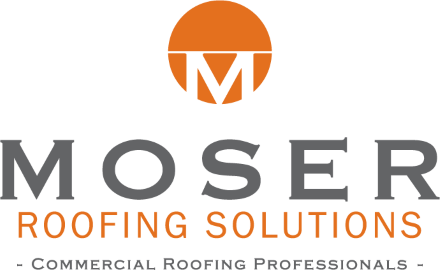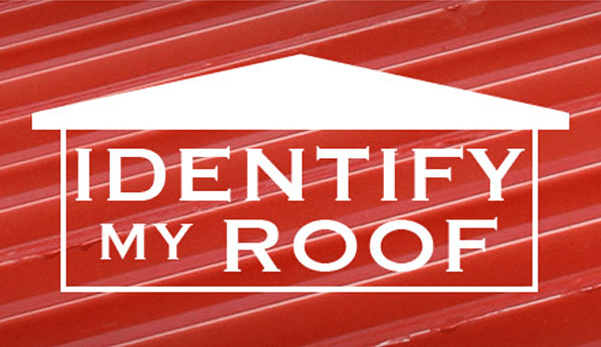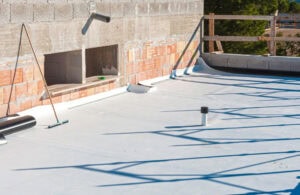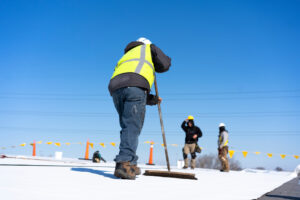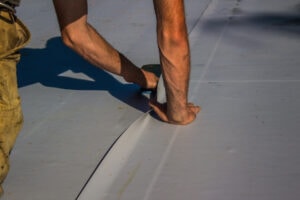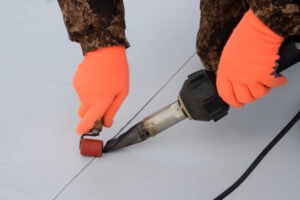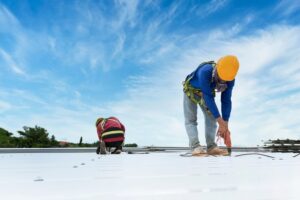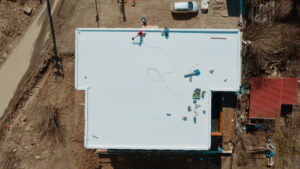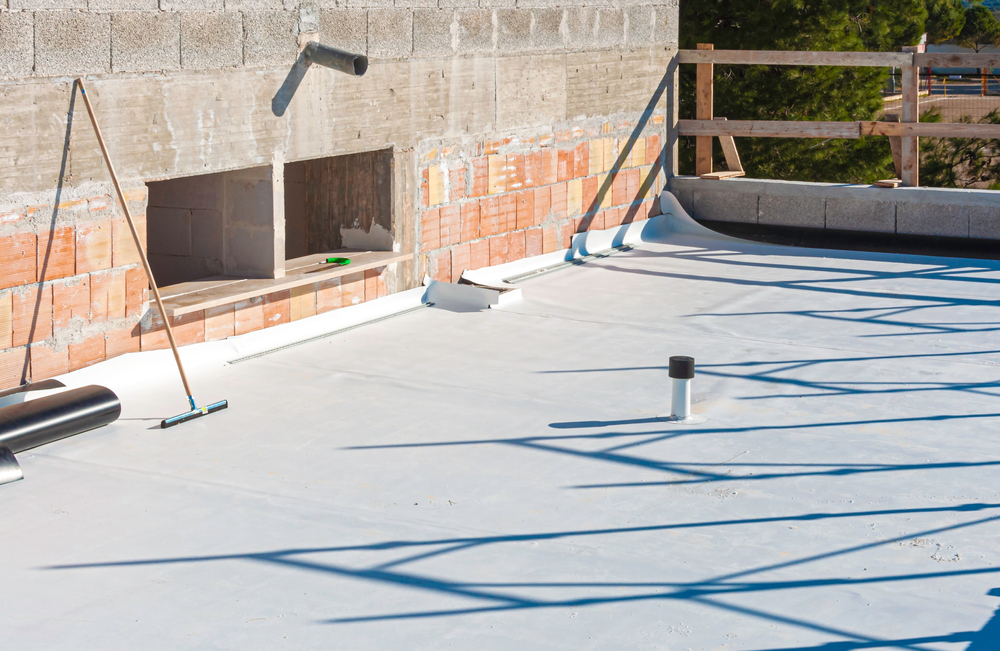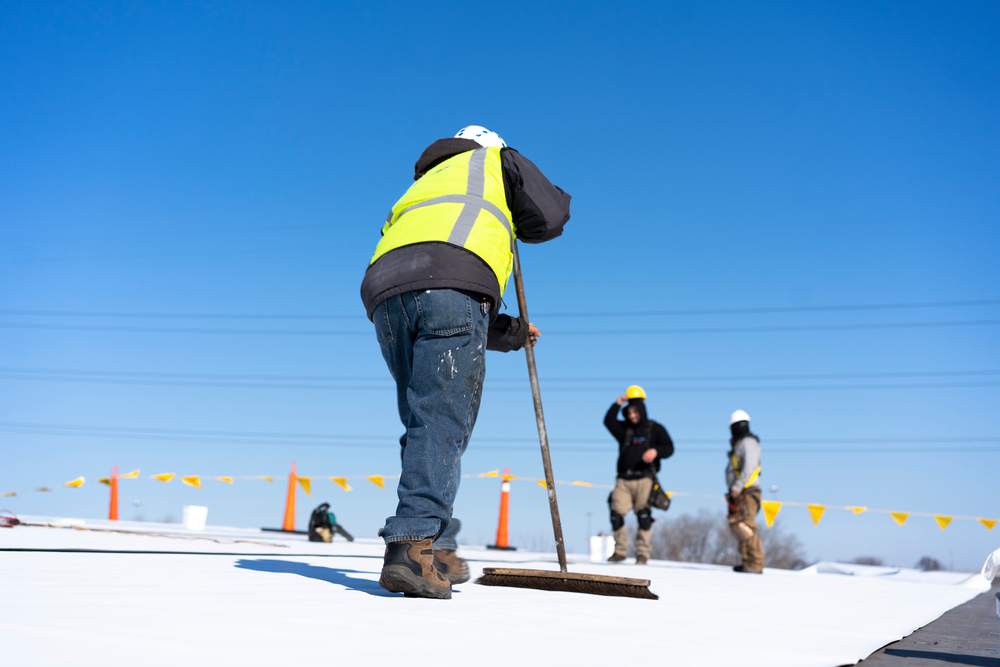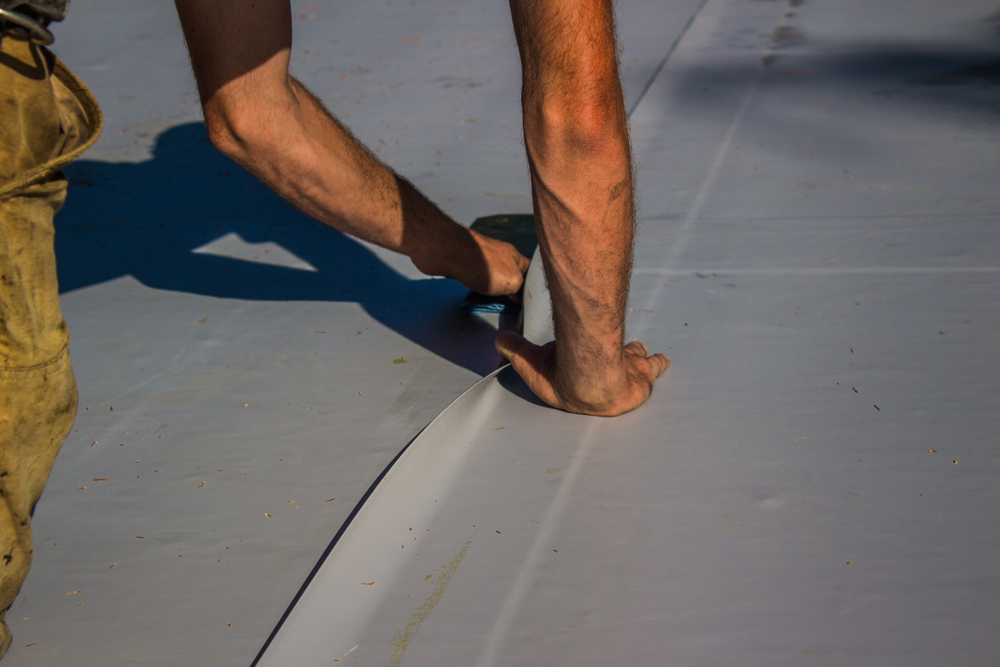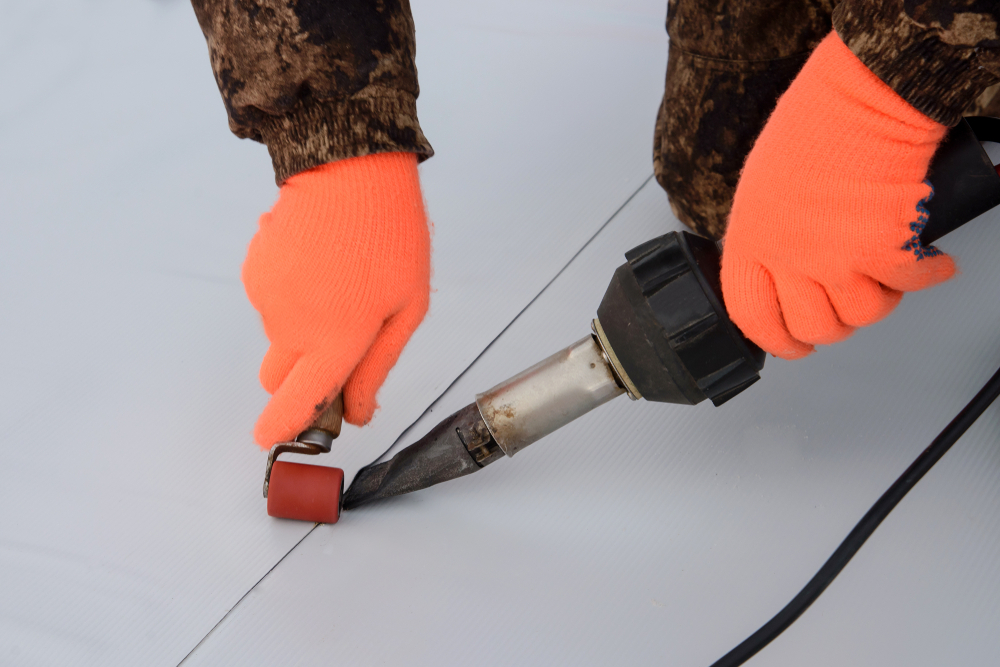Moser Puts Safety First
In any workplace, safety should always be a top priority. In commercial roofing, when workers are using dangerous equipment or working in hazardous conditions, safety precautions must be taken to minimize the risk of injury.
Commercial roofers often work at great heights, and they use heavy equipment and hazardous materials. If safety precautions are not taken, serious injuries can occur. In fact, in the United States, commercial roofing is one of the most dangerous professions. According to a study published by the Bureau of Labor Statistics, roofers are the third most dangerous profession, behind just logging workers and hunting and fishing workers.
That’s why it’s so important for commercial roofers to always use safety equipment and follow safety procedures. Safety equipment includes hard hats, safety glasses, gloves, and other protective gear.
Safety procedures include wearing proper safety gear, using caution when working at heights, using ladders and scaffolding properly, and following the manufacturer’s safety instructions for equipment and materials.
OSHA Regulations Improve Safety
Commercial roofers should also be familiar with the Occupational Safety and Health Administration (OSHA) regulations that apply to their profession. OSHA is a federal agency that sets safety standards for the workplace.
One of the most important OSHA regulations for fall protection covers the distance from an edge a roofer is working, which is one of the highest risks for falls and injury. For example, when a roofer is within six feet or less of an unprotected side or edge, a practical recommendation is to place a warning line or string tied between stanchions, designate the 6’ mark, and have a safety monitor on the worksite to observe and warn a roofer when they approach or cross the warning line.
“Tying off” with a personal fall arrest system that consists of a harness, line, and anchor or fall arrest cart designed to stop someone’s fall if they go over the edge or prevent them from reaching the edge. Tying off with a personal fall arrest system is critical safety measures to reduce the risk of injury and improve commercial roofing safety. By working safely, companies can ensure that their roofing professionals will return home safe and sound at the end of the day.
Tying Off Is The Best Roofing Safety Solution
People generally default to the quickest and easiest solution to a problem, so most commercial roofing companies make heavy use of the safety monitor system, but don’t tie off if they don’t need to. However, there are big problems with the safety monitor system. Because OSHA allows safety monitors to do other work as long as they can still pay attention to those working outside the line, close to the edge, the safety monitor often ends up doing roofing work and is effectively not attending to the edge or anyone near it. And even if the safety monitor is focused, they can’t actually prevent a roofer from going over the edge or falling, but only verbally warn you when you’re close to the edge or nearby obstacles.
Tying off has challenges for commercial roofers, including working with a lanyard in the way, chafing from the harness, and having to install an anchor into the roof to tie off, only to remove it and fix the newly-made hole when moving to another part of the roof. These challenges can cause frustration due to the additional hassle and time-consuming nature.
However, that’s a small inconvenience in exchange for commercial roofer safety.
Safety Is Core To Who We Are
The potential dangers posed by working on commercial roofs without adequate safety precautions cannot be ignored. Not only does it put employees at risk, but it also increases liability for employers in case of an accident or injury. Having a secure anchoring system installed on the roof is essential for keeping workers safe while performing necessary duties such as repairs or maintenance tasks on commercial roofs.
Safety is one of the core values at Moser Roofing Solutions. More than just a talking point, Moser safety practices require a “100% tie-off” policy. If any of our commercial roofing professionals will be working within the “six feet or less” boundary from the edge they are required to use a personal fall arrest system.
Commercial roofing can be a dangerous business, so Moser has invested in the training and equipment necessary to maximize safety under this policy. Using lighter-weight fall arrest carts reduces the need for installing anchors or moving heavy, weighted carts. Additional retractable lines are now available for those roofers who prefer them over the standard lanyard, and new harnesses are available for anyone who needs one. Having a 100% tie-off policy takes more time and investment, but is an important step to creating a safer worksite because we truly value each team member and are committed to their well-being.
At Moser Roofing Solutions, safety comes first for our customers and our team. Talk with us and you’ll find that it’s more than just what we say. It’s what we do.
